Despite climate goals, California will let three gas plants keep running
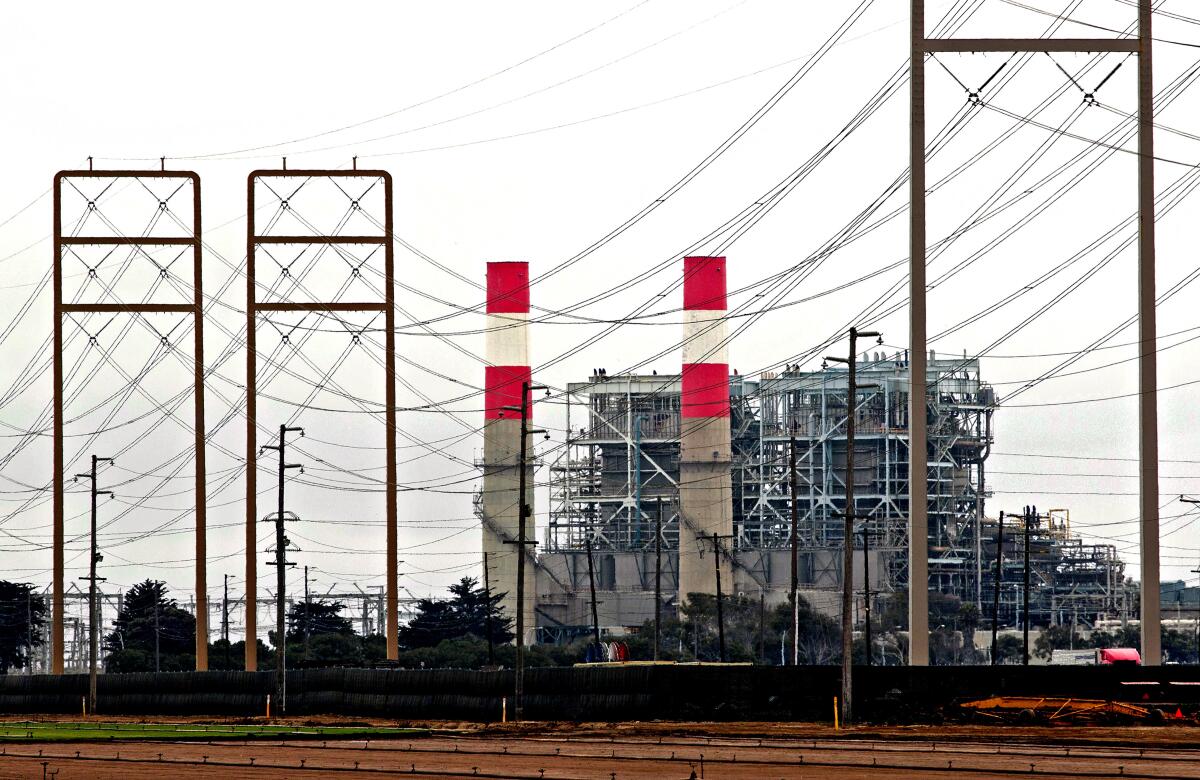
This story was originally published in Boiling Point, a newsletter about climate change and the environment. Sign up here to get it in your inbox.
Sometimes, breaking news is spectacularly unsurprising — but still hugely consequential.
That was the case Tuesday, when California officials finalized a decision they’d been telegraphing for months, voting to extend the life of three gas-fired power plants along the state’s southern coast through 2026, instead of closing them later this year.
The gas plants pollute the air breathed by nearby residents and help fuel the climate crisis. But Gov. Gavin Newsom’s appointees concluded we still need them — at least for a few more years — to avoid blackouts that could strand millions of people without air conditioning during brutal heat waves and endanger Californians who depend on medical devices powered by electricity.
E. Joaquin Esquivel, who chairs the State Water Resources Control Board, said he identified with “the frustration and the pain” of people who said allowing the gas plants to keep running would harm members of their communities vulnerable to air pollution.
But Esquivel suggested that the water board — which had the final say over the gas plants’ fate due to a regulatory quirk — had little choice but to follow the lead of the California Energy Commission, which voted last week to keep the facilities open.
“This board is not established to have the expertise to second-guess all of our energy agencies,” he said.
Tuesday’s 5-0 vote was a reminder of how hard it will be — and how necessary it still is — to stop burning fossil fuels.
The three gas plants were originally supposed to shut down three years ago, as the Golden State worked to generate ever-larger amounts of electricity from solar panels, wind turbines and other climate-friendly power sources. But after two evenings of brief rolling blackouts in August 2020, the water board decided to give the gas plants a three-year shutdown extension.
Newsom’s appointees initially expressed confidence that California would be able to build enough clean energy resources by the end of 2023 to close the polluting generators in Huntington Beach, Long Beach and Oxnard before the new deadline.
But that’s not what happened.
Global supply chain constraints delayed the construction of large solar farms, as well as batteries designed to store solar power for after sundown. Some proposed renewable energy facilities moved forward more slowly than expected amid opposition from local residents and arduous environmental reviews meant to protect wildlife habitat and scenic landscapes.
At the same time, the world kept getting hotter and more flammable, resulting in more aggressive heat waves and wildfires that drove up demand for air conditioning and nearly prompted additional rolling blackouts in California the last two summers.
Those factors led to Tuesday’s vote extending the life of the three gas plants — and, previously, to state officials signing contracts with the owners of the controversial gas generators that could ultimately cost taxpayers as much as $1.2 billion.
In an email, Newsom spokesperson Alex Stack called the three gas plants and other energy resources contracted by the state over the last year “essential backup options in the event of extreme weather scenarios.”
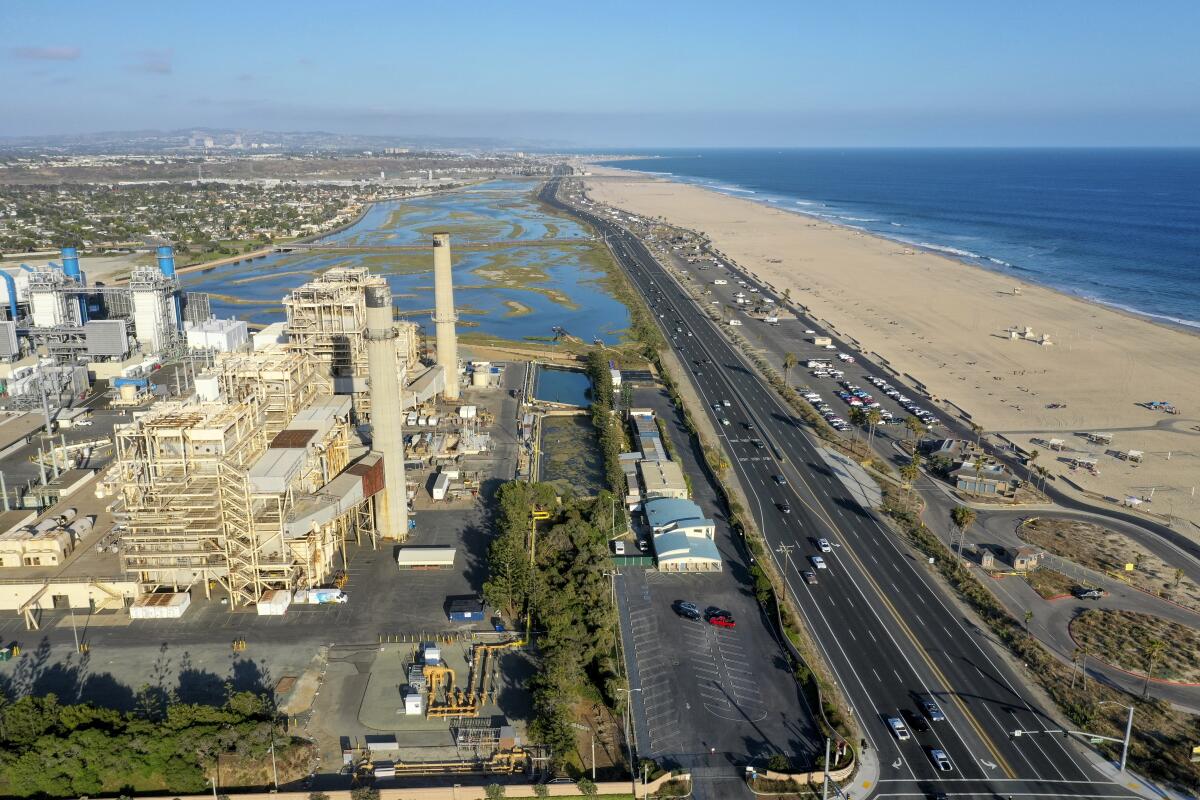
Climate activists and local residents near the gas plants are furious.
Dozens of people spoke in opposition to the extensions at Tuesday’s water board meeting in Sacramento, ahead of a march to the state Capitol planned by the California Environmental Justice Alliance (ultimately canceled in part because of temperatures expected to reach triple digits). Several speakers said allowing the coastal gas generators to keep running would be especially harmful in the predominantly Latino, low-income city of Oxnard, near neighborhoods already burdened by high asthma rates.
“Why must our communities suffer because our state doesn’t have the strength to admit that these power plants are hurting us?” Oxnard resident Angie Garcia asked the water board before the vote. “They release enormous amounts of chemicals into our air and water, damaging our health in the process for absolutely no reason.”
Several speakers pointed out that California’s dozens of gas plants sometimes suffer breakdowns during heat waves. They called on state officials to fast-track other electric-grid solutions, such as small urban solar installations, rooftop solar, energy efficiency upgrades and “demand response” programs that pay people to use less energy when there’s not enough to go around.
Another Oxnard resident, Kyle De La Torre, described getting migraine headaches and feeling nauseated and dizzy while driving past the plant during DoorDash deliveries. He said Newsom, despite being governor, “does not get to sacrifice our lives.”
“Don’t just vote with him because you feel he has more power,” De La Torre urged the water board.
Eric Watts — chief commercial officer at GenOn Energy Inc., which owns the Ormond Beach plant in Oxnard — said the company agrees with state officials that a deadline extension is “necessary to protect grid reliability in the coming years.” Under the plant’s contract with the state, he said, the facility will only operate during “extreme emergency conditions,” limiting emissions.
He also said the plant’s lung-damaging nitrogen oxide emissions represent “a small fraction” of local air pollution.
“There is an end in sight,” he added.
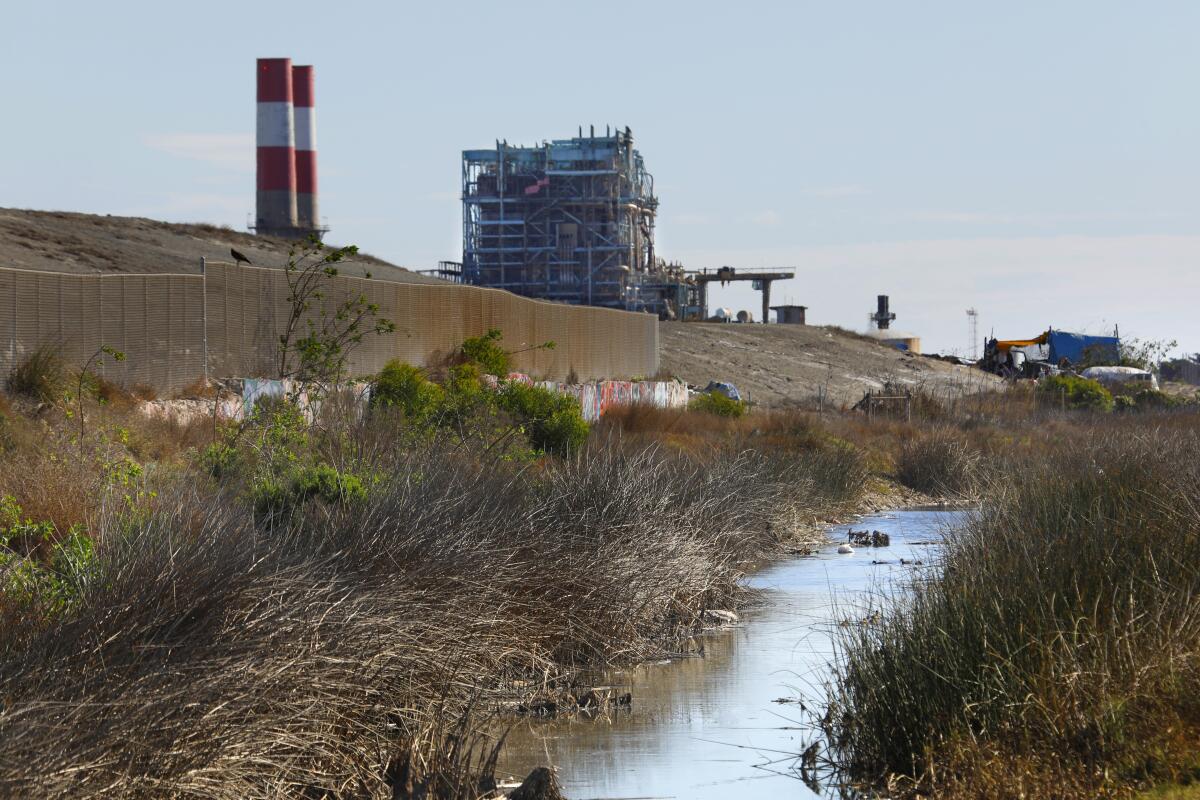
Even as clean energy advocates aired their concerns to Newsom’s appointees on the water board, they were looking ahead to a related vote planned by another state agency — this one dealing with the Aliso Canyon natural gas storage field.
Aliso Canyon is operated by Southern California Gas Co. and supplies fuel to power plants, oil refineries and millions of homes and businesses that use gas for space heating, water heating and cooking. The storage field is best known for a record-breaking 2015 leak that spewed heat-trapping methane gas into the atmosphere and forced thousands of people to evacuate from the Porter Ranch neighborhood in L.A.’s San Fernando Valley, due to fears of dangerous chemical releases.
Newsom has said he agrees with activists and Porter Ranch residents who want to see Aliso closed. But thus far, his appointees have only raised the limit on how much fuel SoCalGas can store there — and they’re preparing to do so again.
The California Public Utilities Commission is expected to vote Aug. 31 on a proposal to raise the storage cap at Aliso to 68.6 billion cubic feet, from 41.16 billion cubic feet — a two-thirds boost. The request was made by SoCalGas and is supported by commission staff, who say that more storage at Aliso would result in lower natural gas and electricity prices this winter.
Asked about the storage cap, SoCalGas spokesperson Chris Gilbride said in an email that the commission’s proposed decision “is a prudent step that would help advance our shared goal of maintaining energy reliability at just and reasonable rates.”
State Sen. Henry Stern (D-Los Angeles), whose district includes Porter Ranch, called the proposal “an unwelcome surprise.” He said it’s hard to believe that allowing SoCalGas to store more fuel at Aliso would result in lower energy prices.
“The impacted communities deserve reassurance this will not undercut the Governor’s commitment to closure,” Stern said in a written statement. The proposal in front of Newsom’s appointees, he added, “goes in the opposite direction.”
The possibility of SoCalGas being allowed to pump more natural gas underground at Aliso — a depleted oil reservoir in the Santa Susana Mountains — has also brought together some of the leading candidates for California’s open U.S. Senate seat.
In a letter last week to Alice Reynolds, president of the Public Utilities Commission, U.S. Rep. Adam B. Schiff (D-Burbank) urged the agency not to increase the storage cap, saying Aliso Canyon “has continued to pose significant danger to the health and safety of Los Angeles residents” and should be shut down. Schiff’s competitors for retiring Sen. Dianne Feinstein’s seat took similar stances in written statements to Politico, with Rep. Barbara Lee (D-Oakland) saying Aliso is “not at all necessary for California to meet its energy needs” and Rep. Katie Porter (D-Irvine) calling the 2015 gas leak “total malpractice, with an entire community put at risk.”
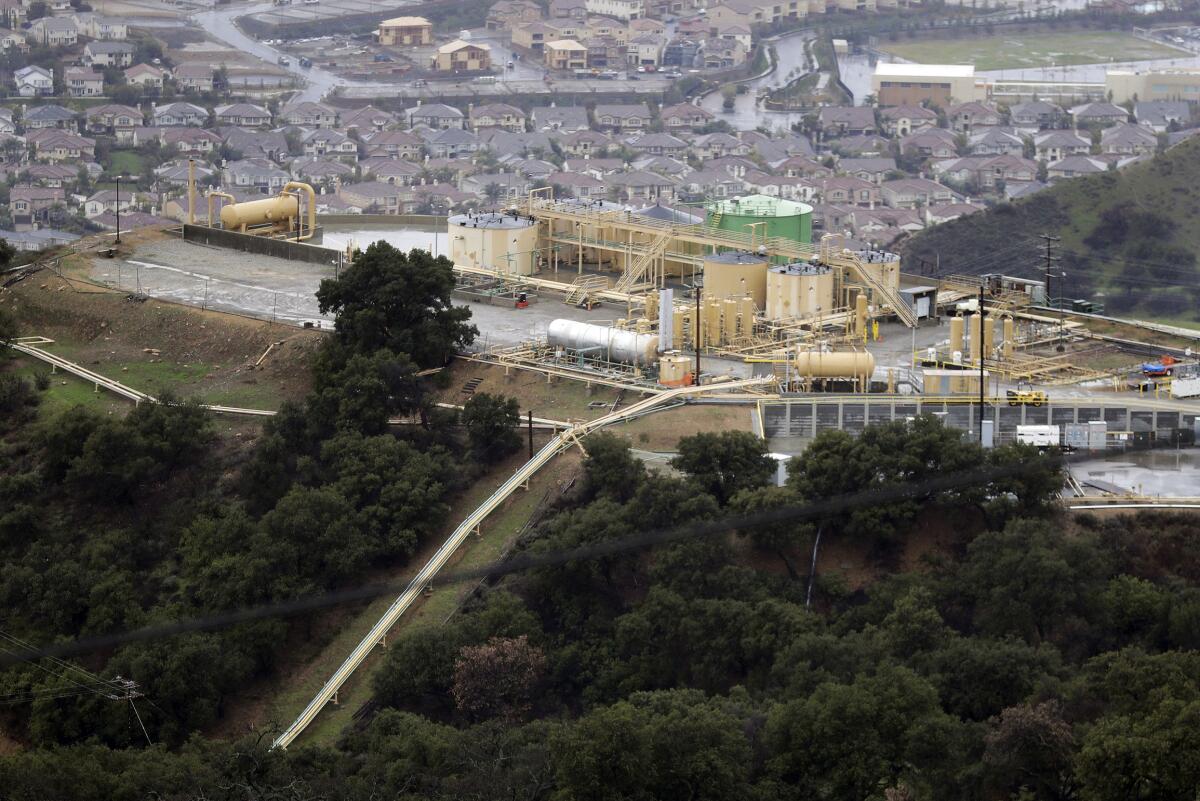
Meanwhile, the legal and economic fallout from the Aliso Canyon leak continues.
Just last week, Public Utilities Commission staff tentatively approved a roughly $600-million settlement with SoCalGas, following charges brought by commission staff that the company had violated hundreds of regulations, including failure to cooperate with the state’s investigation. The gas utility managed to negotiate a settlement in which it admits to just one count of wrongdoing, acknowledging it violated a single safety-related regulation “based on the totality of the circumstances.”
Critics see the settlement as wildly inadequate.
Most of the $600 million isn’t actually a fine the utility must pay, but rather a promise from SoCalGas that it won’t try to charge its customers for the costs of responding to the leak, including $362 million in legal and regulatory costs and $108 million related to the state’s investigation. Instead, shareholders of SoCalGas’ parent company, Sempra Energy, will shoulder those costs.
Just $71 million will go into a fund that could be used to help Porter Ranch residents and others replace their gas appliances with electric heat pumps and induction stoves, which can limit global warming while also improving air quality within homes.
Issam Najm, former president of the Porter Ranch Neighborhood Council, described the settlement as “a joke.”
“It’s greenwashing,” he said.
Asked about the settlement, Gilbride said the gas company is “pleased to resolve this important matter after almost eight years.”
The settlement will take effect next month unless the Public Utilities Commission receives a public appeal — or one of Newsom’s appointees on the commission requests a review. In either case, the commission would need to take a formal vote.
Closing Aliso Canyon would be a lot easier if millions of Southern Californians switch from gas to electric appliances — a switch that could be aided by financial incentives from the Inflation Reduction Act signed by President Biden last year.
But electric appliances aren’t the only possible solution. Replacing gas with hydrogen at industrial facilities could also help.
That’s what the Los Angeles Department of Water and Power is attempting to do at Scattergood Generating Station, a gas-fired power plant along the coast near El Segundo. The state water board gave a boost to that effort Tuesday, voting to let DWP keep operating the Scattergood plant through 2029, beyond a current shutdown deadline of 2024. That will give the city more time to carry out the never-before-attempted transition to clean-burning, cleanly produced hydrogen fuel for electricity.
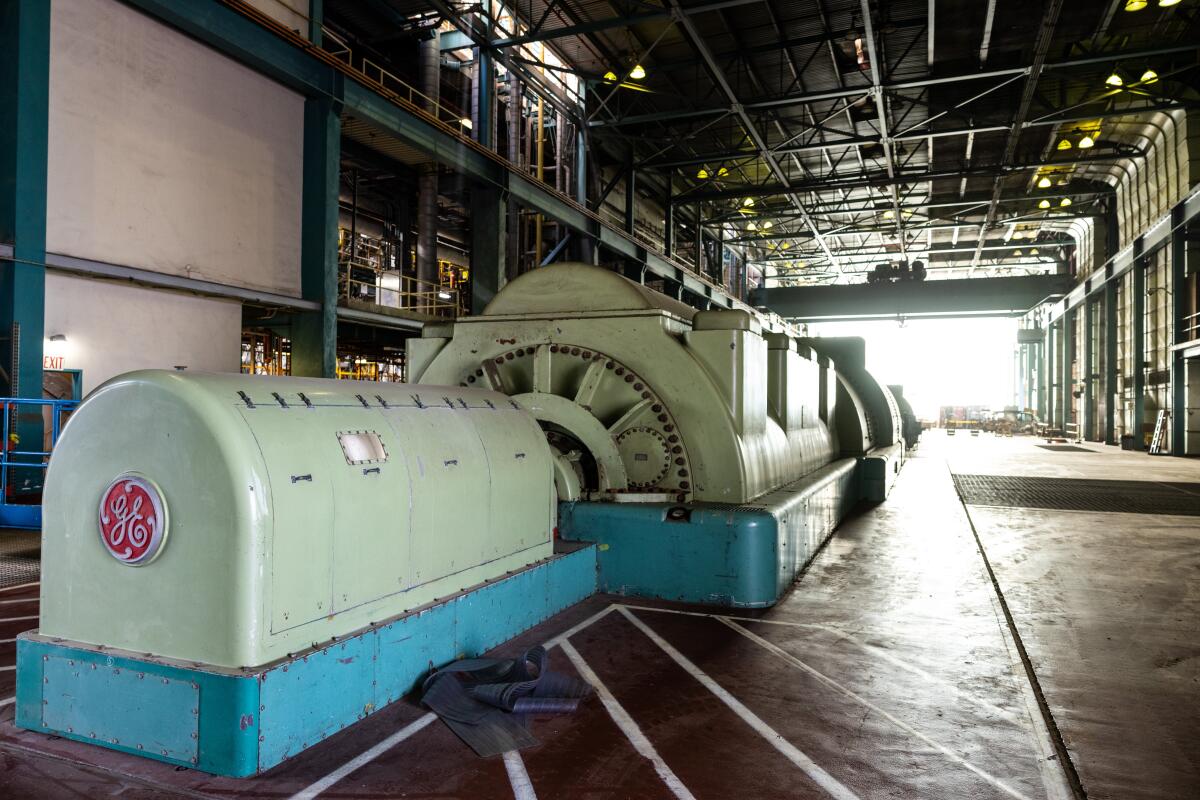
Several unionized construction laborers whose colleagues could get work converting the Scattergood plant spoke in favor of the extension at Tuesday’s meeting. So did a group of DWP staffers, who said the city utility has no choice but to keep burning gas — at Scattergood and other power plants in the L.A. Basin — to keep the lights on while it navigates the transition to hydrogen.
“Due to the way our system was built out from our coastal plants, we are a cul-de-sac” on the electric grid, said Katherine Rubin, DWP’s director of environmental affairs. “We are isolated, and the in-basin units provide that critical capacity.”
Steve Fleischli, a Santa Monica-based staffer at the Natural Resources Defense Council, offered a competing take. He noted that the water board had already given DWP a previous deadline extension at Scattergood, back when city officials planned to keep burning natural gas using new technology that would comply with state rules. He said another extension would be a mistake.
“We’ve seen this movie before,” Fleischli said. “Today it is green hydrogen, tomorrow will be something else once they realize that hydrogen is not the panacea that they pretend it is.... Let’s not wait until 2029 to confront that very real possibility.”
Hydrogen is just one part of a larger debate over the role of natural gas in powering California and the rest of the country.
Even as SoCalGas and other utilities have pledged to invest in green hydrogen and take additional steps to sharply reduce their emissions, they’ve also continued to promote natural gas as a relatively clean alternative to coal — despite a growing number of scientific studies finding that gas may not be much better for the climate, and that it can lead to dirty air within homes.
SoCalGas’ efforts to promote the heat-trapping fuel actually got the company into trouble with Rob Bonta, California’s attorney general. This week, Bonta announced a settlement with the gas utility over what his office described as “numerous unqualified environmental marketing claims,” which involved SoCalGas having previously claimed that natural gas is “renewable.”
“Truth in marketing matters, and it’s required under state law,” Bonta said in a written statement.
Although SoCalGas sources small amounts of fuel from dairies, landfills and other sources the gas industry considers renewable, the vast majority of its supplies still come from traditional, underground reserves. As part of the settlement, the company agreed to pay $175,000 in penalties, at least half of which will support low-income neighborhoods and communities of color.
“We are pleased to have cooperatively resolved this matter,” Gilbride, the gas company spokesperson, said in an email. “SoCalGas remains committed to delivering increasingly renewable natural gas and other clean fuels to its customers. This is part of our aim to achieve net zero greenhouse gas emissions in our operations and delivery of energy by 2045.”
The settlement is still subject to court approval.
Whatever the court decides, California’s work to end the combustion of fossil fuels won’t get any easier. Exhibit A: The state’s main electric-grid operator warned Sunday that high temperatures this week could put a strain on power supplies.
But scientists have found that solar panels, wind turbines and batteries can get us most of the way to 100% clean energy. In a state ravaged by worsening heat waves, fires and storms, investing in those technologies and others is more crucial than ever.
ONE MORE THING

I was stunned to learn that Diana Marcum — a former Los Angeles Times journalist and all-around beloved human being who earned a Pulitzer Prize in 2015 for her searing coverage of drought impacts in the Central Valley — had died at age 60.
Diana “forged a career, and a life, by giving a voice to Californians whom many people didn’t take time to notice. Her favorite subjects were strivers and oddballs, the dispossessed and the people who dared to be delighted in the face of life’s struggles,” my colleague James Rainey wrote in a beautiful obituary. “In even the darkest tales, she usually managed to deliver a ray of light.”
Rest in peace, Diana.
We’ll be back in your inbox Thursday. To view this newsletter in your Web browser, click here. And for more climate and environment news, follow @Sammy_Roth on Twitter.
Toward a more sustainable California
Get Boiling Point, our newsletter exploring climate change, energy and the environment, and become part of the conversation — and the solution.
You may occasionally receive promotional content from the Los Angeles Times.




